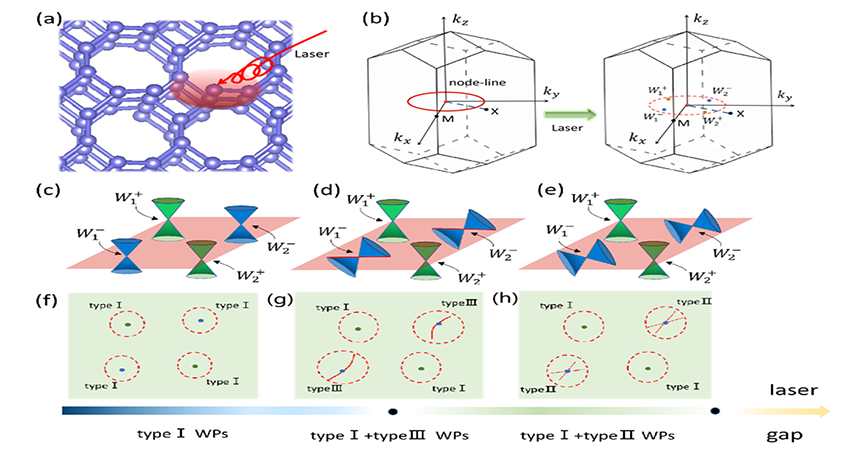A paper with Deng Tingwei, an undergraduate of 2016 of the School of Physics, as the first author, was published as a rapid communication paper online in Physical Review B, an international top journal of physics the other day. The title of the paper is “Photoinduced Floquet mixed-Weyl semi llic phase in a carbon allotrope”. Physical Review B is an international authoritative journal in the area of condensed matter physics run by American Physical Society. It is also one of the 82 journals covered by the Natural Index.
Deng Tingwei joined the research group of Associate Professor Wang Rui during the summer vacation of his junior year. Under the guidance of Wang Rui, Deng completed the theoretical calculation work of the paper during his senior year. Wang Rui is the corresponding author of the paper, and Chongqing University is the first and corresponding organization of the paper.

In recent years, due to its unique topological band structure, topological materials have become one of the hottest research areas in condensed matter physics and materials science, and are expected to have important applications in the next generation of electronic components. With the development of the research on topological materials, it is very important to study the evolution behavior of topological states and the control of light field. Driven by the periodic light field, the solid energy band evolves into the Floquet-Bloch band structure due to the double periodicity of space and time. Therefore, the interaction between light and condensed matter provides a new idea for exploring new topological quantum state and topological phase transition.
During the research, the author firstly constructed a tight binding model which can describe the band structure of real materials through first-principle calculations, and then developed a general method to study the band structure of solid state driven by light field based on the Floquet theory. By calculating the electron band structures of various light incident directions and polarization states, it was found that the carbon isomers with topological nodal semi metals (body-centered tetragonal C16) can evolve into Weyl semi metals. More importantly, by adjusting the intensity of the incident light, the unconventional Weyl pairs composed of different types of Weyl node pairs were realized for the first time in a real material system. This was an important breakthrough of the research, which has been highly spoken of by the reviewers. According to the reviewers, “this is very interesting in my opinion since realistic platforms to realize Floquet physics are scarce” and “the study is timely and meets the relevant criteria of potential impact and innovation”
Link of the paper:
https:// .aps.org/doi/10.1103/PhysRevB.102.201105
